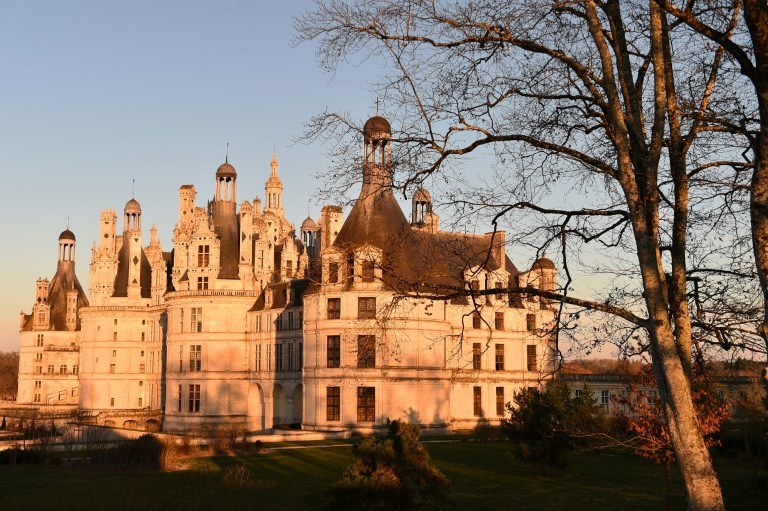The Chateau de Chambord's energy bill is expected to reach the cost of two temporary exhibitions and a festival
Inside his French chateau on the riverbanks of the Loire, Xavier Leleve dreads to find out how much it will cost to heat the 12th-century building this winter.
Energy bills in France are expected to soar compared to last year, partly as a result of a hike in gas prices following the Russian invasion of Ukraine.
The prospect is particularly worrying owners and directors of large historical buildings dotted along the Loire.
Usually, Leleve pays 15,000 to 20,000 euros ($14,800 to $19,700) in heating, electricity and gas each winter to keep the Meung-sur-Loire castle up and running.
But this year, “it’ll be five to ten times more expensive. You simply can’t start spending that much on energy,” he said.
It would divert funds from other projects, including the much-needed conservation of some parts of the listed building.
In a wing of the castle closed off to the public, he pointed to the windows.
Some looked in bad shape, with duct tape covering some wooden frames and barely keeping out the outside cold.
Other windows were brand new, put in place after long discussions with the regional cultural authority on what they should look like to best respect the castle’s original aesthetics.
“A window costs around 10,000 euros and we have 148 of them, so you can imagine how much the window budget is,” said Leleve.
– ‘Bare minimum’ –
An hour’s drive away down the river, Charles-Antoine de Vibraye has decided the best course of action to keep his huge family home heated this winter is to do nothing at all.
The Cheverny chateau, which inspired Captain Haddock’s family estate in “The Adventures of Tintin”, has belonged to the same family for six centuries, its website says.
Today some of the family still live in one wing of the stately home, but the rest of the building and its grounds include a restaurant and a Tintin exhibition, and are open to paying visitors.
De Vibraye says the business — one of the most visited Loire Valley castles — is successful enough for the family to be able to afford the extra cost of the 30,000 to 40,000 litres of heating oil needed each year.
He does not plan to increase the building’s insulation either.
“If you trap in the heat, you just help the possible fungi and insects that will eat up your wood,” he said.
“You need to limit heating to a bare minimum to not upset this healthy cycle of thermal exchanges inside a historical building,” he added, though admitting a constant temperature was better for old furniture.
He said two-thirds of the building was heated, “especially in the rooms that people visit and where there is historical furniture”.
– New sawmill –
A little further south, four large logs burn in the chimney at the bottom of a sweeping staircase in the state-owned Chateau of Chambord, the only source of heat for visitors.
But its offices, shops and some 40 houses on its estate are heated.
“The budget has doubled in two years. We’ve gone from 260,000 euros to more than 600,000 in the budget for 2023,” said Jean d’Haussonville, the director of the surrounding estate.
The castle, one of several on the section of the Loire Valley listed as a UNESCO World Heritage site, usually works with an annual budget of 30 million euros a year.
Of that, the energy bill is now expected to be equivalent to the cost of two temporary exhibitions and a festival, he said.
D’Haussonville said that had sparked serious thought about how to transition to alternative sources of energy, for example setting up solar panels on its hangars.
In the coming months, management will also build a sawmill in the chateau’s 50-square-kilometre (19-square-mile) forest, which could see its wood used for heating in the long run.
Until then, managers are hoping a new IT system might help avoid unnecessary expenses and are continuing a conversion to LED lights.
“It’s a programme that allows you, for example, to turn off lights when there’s no one in a room, and to reduce its temperature to just 8 degrees Celsius (46 degrees Fahrenheit) at night,” d’Haussonville said.
He said they planned this way to have reduced their energy consumption by at least 10 percent by next year.









